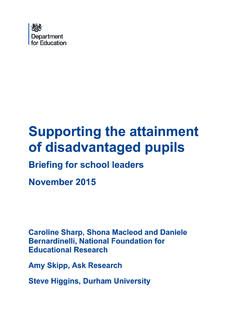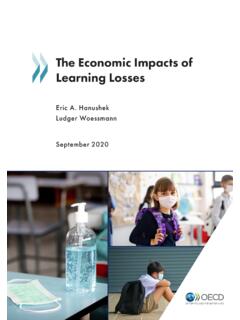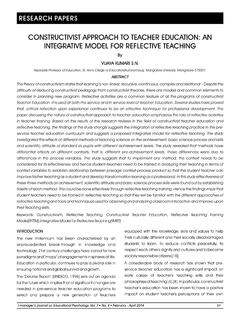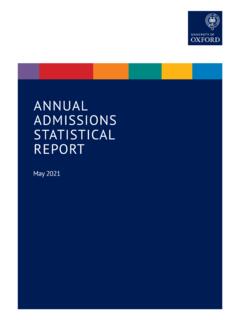Transcription of Key stage 4 performance, 2019 (revised) - GOV.UK
1 1 Key stage 4 performance, 2019 (revised) Latest headline data for pupils at the end of key stage 4 State funded schools, England1 Measure % EBacc entry % English and maths, grade 5 or above Attainment 8 EBacc Average Point Score Change from previous year2 2019 revised 2018 revised Compared with 2018 revised data, for state funded schools: EBacc (English Baccalaureate) entry rate increased by percentage points to , the highest entry rate since the introduction of the EBacc measure in 2010. The percentage of pupils at the end of key stage 4 who achieved grade 5 or above in English and mathematics remained stable.
2 Average Attainment 8 score per pupil was stable. The EBacc average point score (EBacc APS) remained stable. The gap between disadvantaged pupils and all other pupils remains broadly stable disadvantaged attainment gap index The gap between disadvantaged pupils and others, measured using the gap index, remained broadly stable, increasing by between 2018 and 2019, from to This is the second small increase in a row. The gap is 9. 1% lower than in 2011. 1 State funded schools include academies, free schools, city technology colleges, further education colleges with provision for 14- to 16-year-olds and state-funded special schools.
3 There were 3,965 schools and 542,568 end of KS4 pupils. 2 Key stage 4 data in both years is based on revised data for improved comparability. 2 About this release This release summarises exam entry and achievements of pupils at the end of key stage 43 (KS4) in 2019. Figures are available at national, regional, local authority level and some lower level breakdowns such as local authority district and parliamentary constituency. For comparison of schools and colleges performance, please use the School Performance Tables website. The data in this release is revised. The statistics in this release are based on the results data that awarding organisations supply to the department.
4 This release provides an update to the provisional figures released in October 2019. Amendments made during the schools checking exercise in September are included in this release, as are the majority of late results and reviews of marking received after the cut-off date for the provisional release in October. This release also provides breakdowns by pupil characteristics which were not included in the provisional update. From September 2019, the floor and coasting standards no longer apply therefore this information is no longer included in the revised release4. The measures covered in this release include qualifications that count towards the secondary school performance tables5.
5 Schools that offer unapproved qualifications, such as unregulated international GCSEs, will not have this data counted in the secondary school performance tables. Pupils achievements in these qualifications are therefore not reflected in this release. A section on considerations when using KS4 statistics can be found in the Entry patterns and qualification reform section in the provisional release. About this report This report will compare revised results for 2019 to revised results from 2018. There is usually a slight increase in the key national statistics between the provisional and revised releases due to accepted amendment requests made by schools during the September checking exercise6.
6 As such, users should be aware that the statistics in this release may differ from the provisional release. State funded schools are the focus of the commentary in this report7. 3 Pupils are identified as being at the end of key stage 4 if they were on roll at the school and in year 11 at the time of the January school census. Age is calculated as at 31 August at the start of the academic year, and the majority of pupils at the end of key stage 4 were age 15 at this point. Some pupils may complete this key stage in an earlier or later year group. 4 The Government has set out a new system of support for schools identified as requires improvement in their latest Ofsted report 5 A list of qualifications that count in the secondary school performance tables each year up to 2021 can be found here 6 adding outcomes of re-marks or late or missing results.
7 7 For more information and data on the differences between entry patterns in independent and state funded schools, please see page 4 of the provisional release linked above. 3 Feedback We welcome feedback on any aspect of this document at This year, we have changed the way we display data, by reducing the formatted tables we publish in favour of a more accessible format fit for a wider range of users. This new format contains the same amount of information as was provided in previous publications. We have published documentation alongside this to make navigation of this data easier but would appreciate targeted feedback on this change so we can ensure we continue to meet diverse user needs.
8 For more information, see the methodology document published alongside this release. 2019 headline accountability measures The headline accountability measures for secondary schools include: Progress 8, EBacc entry, destinations of pupils after key stage 48, attainment in English and mathematics, Attainment 8 and EBacc APS. For more information, see the secondary accountability guidance. Progress 8 Progress 8 aims to capture the progress a pupil makes from the end of key stage 2 (KS2) to the end of KS4. It compares pupils achievement their Attainment 8 score (see below) with the national average Attainment 8 score of all pupils who had a similar starting point (or prior attainment ), calculated using assessment results from the end of primary school.
9 Progress 8 is a relative measure, therefore the national average Progress 8 score for mainstream schools is very close to zero9. The English Baccalaureate (EBacc) entry The EBacc shows how many pupils are entering GCSEs (or AS level qualifications) in core academic subjects at KS4. The EBacc consists of English, maths, science, a language, and history or geography. To count in the EBacc, qualifications must be on the English Baccalaureate list of qualifications. Attainment in English and mathematics (grades 5 or above) 10 This measure looks at the percentage of pupils achieving grade 5 or above in both English and mathematics.
10 8 Destinations of pupils after KS4 are covered in a separate publication here 9 When including pupils at special schools the national average is not zero, as Progress 8 scores for special schools are calculated using Attainment 8 estimates based on pupils in mainstream schools. 10 This includes AS-level qualification passes at grades A-E 4 Attainment 8 Attainment 8 measures the average achievement of pupils in up to 8 qualifications. This includes: English (double weighted if both GCSEs in language and literature are taken); maths ( double weighted); three further qualifications that count in the English Baccalaureate (EBacc); and three further qualifications that can be GCSE qualifications (including EBacc subjects) or any other non-GCSE qualifications on the DfE approved list.
















